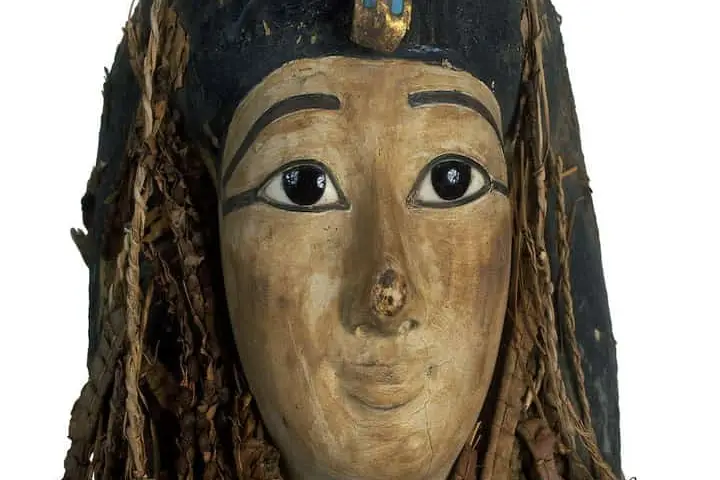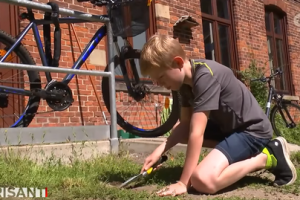Following centuries of being hidden away from the world, the well-known mummy of Pharaoh Amenhotep I has been unwrapped not literally but digitally enabling the world to know about him.
As per a write-up in scitechdaily.com, Amenhotep I’s mummy was one exception among the several royal mummies that had been discovered in the 19th and 20th Centuries as it had not been opened. The reason why Egyptologists refrained from doing so was not because they were afraid of any spell or curse. The logic was based on the fact that the mummy was wrapped up perfectly, decorated exquisitely with flower garlands while an elegant facemask which was lifelike and had colourful stones inset covered its face and neck.
Now it is different as the scientists and archaeologists have taken aid of three-dimensional computed tomography (CT) to unwrap this royal mummy digitally allowing them to know and study its contents.
Also read: Salt kitchens – a well guarded secret of the Mayan civilization revealed
The findings of this exercise have been published in Frontiers in Medicine.
Interestingly it was after three millennia that the mummy of Amenhotep was being opened. Previously this act had been done in the 11th Century BCE – more than four centuries of his first and original mummification and interment. The earlier opening was not done without a reason. The hieroglyphics explain and describe that it took place during the later 21st dynasty, when priests reinstated and reburied the mummies belonging to the royalty from the ancient dynasties with the objective of repairing the damage done by the ancient robbers of these graves.
Talking about the mummy, the study’s first author Dr. Sahar Saleem said: “This fact that Amenhotep I’s mummy had never been unwrapped in modern times gave us a unique opportunity: not just to study how he had originally been mummified and buried, but also how he had been treated and reburied twice, centuries after his death, by High Priests of Amun.”
Saleem is a Professor of Radiology at the Faculty of Medicine at Cairo University and the radiologist of the Egyptian Mummy Project.

About using the CT to reveal the contents of the mummy she commented: “By digitally unwrapping of the mummy and ‘peeling off’ its virtual layers – the facemask, the bandages, and the mummy itself – we could study this well-preserved pharaoh in unprecedented detail.”
Sharing details about the Pharaoh she said: “We show that Amenhotep I was approximately 35 years old when he died. He was approximately 169 cm tall, circumcised, and had good teeth. Within his wrappings, he wore 30 amulets and a unique golden girdle with gold beads. Amenhotep I seems to have physically resembled his father: he had a narrow chin, a small narrow nose, curly hair, and mildly protruding upper teeth.”
Revealing more details, Dr Saleem said: “We couldn’t find any wounds or disfigurement due to disease to justify the cause of death, except numerous mutilations post mortem, presumably by grave robbers after his first burial. His entrails had been removed by the first mummifiers, but not his brain or heart.”
Amenhotep I’s mummy — a name which means ‘Amun is satisfied’ – was found in 1881 at the archaeological site Deir el Bahari which is located in southern Egypt among other royal mummies which had been reburied.
Amenhotep I was Egypt's 18th dynasty’s second pharaoh. He followed his father Ahmose I – who had ousted the invading Hyksos and reunited Egypt – and reigned from 1525 to 1504 BCE approximately. The period he ruled is considered a kind of golden age as Egypt was prosperous and safe; and there were successful military expeditions to northern Sudan and Libya and at home the pharaoh had initiated and ordered construction of religious buildings. Following his demise, Amenhotep I and his mother Ahmose-Nefertari were worshipped as gods.
Also read: How Masters and Apprentices worked together to produce Ancient Egypt’s stunning Temple Art
In the past, Saleem and the study’s co-author Egyptologist Dr Zahi Hawass, had suggested that the main aim of the 11th Century restorers of the mummies was to make use of royal burial equipment for the later day pharaohs. In the case of Amenhotep I, they disprove their own suggestion.
Commenting on this aspect, Saleem said: “We show that at least for Amenhotep I, the priests of the 21st dynasty lovingly repaired the injuries inflicted by the tomb robbers, restored his mummy to its former glory, and preserved the magnificent jewellery and amulets in place.”
For the Egyptian Antiquity Ministry Project that was commenced in 2005, Hawass and Saleem have studied more than 40 royal mummies of the New Kingdom. Among the 22 royal mummies that were moved to a new museum in Cairo is that of Amenhotep I. Amenhotep I’s mummy’s face with its mask was the icon of the spectacular ‘Royal Golden Mummy Parade’ which was held on March 3rd this year in Cairo.
Stressing on the importance of CT, both Saleem and Hawass concluded: “We show that CT imaging can be profitably used in anthropological and archaeological studies on mummies, including those from other civilizations, for example Peru.”




















